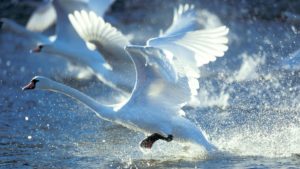Before COVID-19: Tasmania and Victoria were the best states to do business

Pic: metamorworks / iStock / Getty Images Plus via Getty Images
In March, Tasmania was on top of Australia’s state-wide economic table for the first time since October 2009, holding joint spot with Victoria.
CBA’s State of the States report shows Australia’s two smallest states were the best places to do business in the lead up to the coronavirus shutdown.
Growth was driven by retail spending levels in the December quarter, rapidly rising wages, and construction in building-heavy Victoria, and population increases and the subsequent strong demand for houses in Tasmania.
Number three was the ACT thanks to high employment, housing finance and equipment investment, followed by NSW, South Australia and Queensland. Western Australia came in at seventh, followed by Northern Territory.
“While we’ve seen movement at the top of the rankings, there is actually little separating the top four economies,” CommSec chief economist Craig James said.
“Overall, some of the biggest improvements over the past quarter have come from South Australia, Western Australia and Northern Territory as these economies start to close the gap between those leading the rankings.”
The data for the report was collated after the major bushfires that hit NSW and Victoria but before the multi-billion-dollar shutdown of the Australian economy to stop the spread of the COVID-19 disease, which has stung businesses associated with travel the most.
James points to the revival of the Chinese economy as a potential boost for resources industries in Western Australia, Northern Territory and Queensland, while relaxed social distancing may bring forward the large infrastructure plans governments are relying on to kick-start economic recoveries.
Economic data dire but some bright spots
The RBA was considering a quantitative easing (QE) program as far back as November 2019.
RBA Governor Phillip Lowe repeatedly cautioned that it was preparing to defend against a recession and the federal government was reluctantly pulling some infrastructure spending forward to assist.
Lowe said in December the Australian economy “appears to have reached a gentle turning point” thanks to low rates, tax cuts, infrastructure spending, the upswing in housing prices and a brighter outlook for the resources sector, but consistent mentions of QE suggested the outlook for growth, employment and inflation had deteriorated.
Indeed, only a retail sales bounce thanks to panic buying of 8.2 per cent in March, according to the Australian Bureau of Statistics last week, averted an expected quarterly contraction.
A majority of analysts are predicting GDP to shrink steeply in the second quarter due to the massive job losses and the impact of the COVID-19 shutdown on the economy, says consultancy deVere Group.
Lowe cautioned last week that economic output may drop 10 per cent in the first half of this year, the biggest hit since the Great Depression.
The CBA report suggests some parts of the states’ economies were not looking too bad in the lead up.
Victoria saw retail spending at 14.1 per cent above decade average levels in the December quarter.
Tasmanian housing starts were 20.7 per cent higher than decade averages.
ACT had the strongest job market with unemployment at 3 per cent but equipment investment was up 37.9 per cent at 10-year highs.
NSW ranked third in construction and fourth for retail spending.
South Australia saw gains in population growth, equipment investment and housing starts, as did Queensland albeit at lower rates than the other states.
Western Australia may have come in second to last but still registered the fastest economic growth rate in calendar 2019.
The Northern Territory was last but also saw growth in people buying equipment.
Related Topics
UNLOCK INSIGHTS
Discover the untold stories of emerging ASX stocks.
Daily news and expert analysis, it's free to subscribe.
By proceeding, you confirm you understand that we handle personal information in accordance with our Privacy Policy.








